QuickBooks for Mac: Everything You Need to Know
Dec 12, 2025
Sep 24, 2025
Admin |
Estimated Read Time : 5 MIN
A QuickBooks company file is a crucial component of your business that controls all the business, financial, and accounting data. Not being able to access the company file means you will be unable to access all of your company’s data.
If you are getting QuickBooks error 6000 95 when trying to access a company file in the multi-user environment, it means either the hosting settings are incorrect or the data is damaged. The error is one of the 6XXX series errors that appear due to a wide variety of factors, which we will discuss below.
To help you resolve the error, the blog also has step-by-step troubleshooting solutions to make sure error code 6000 95 is fixed, and you can seamlessly work on the network. Let’s dive deep into the blog…
Table of Contents
ToggleYou may experience company file error 6000 95 in QuickBooks for several reasons when trying to access a company file. Let us understand all these reasons one by one:
In this section, we have covered multiple troubleshooting solutions that will help you resolve the root cause of QuickBooks error 6000 95 and make sure you can host and share he company file with others in a multi-user environment.
Software updates are extremely important for seamless performance, the latest security features, bug fixes, and much more. If QuickBooks processes are interrupted, you will not be able to open the company file or perform other tasks. So, make sure to keep QuickBooks updated to the latest available version.
If you continue getting QuickBooks error code 6000 95, continue moving to the next method.
The QuickBooks File Doctor scans the company file to detect any data damage or network connectivity issues and runs a quick fix to them, ensuring the company file error 6000 95 in QuickBooks is fixed.
Note: Download and install QuickBooks Tool Hub to the most recent version 1.6.0.8. For the best experience, it is recommended to use Tool Hub on Windows 10 (64-bit).
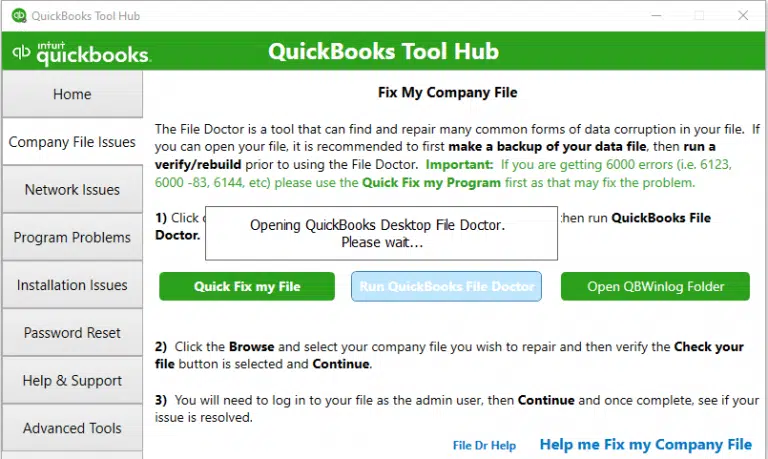
Note: If the QB File Doctor doesn’t open, manually search for QB Desktop File Doc and open it manually.
If you still encounter issues after running QuickBooks File Doctor, proceed with the following solution to open your company file.
It is recommended to use the server computer only to host the company file.
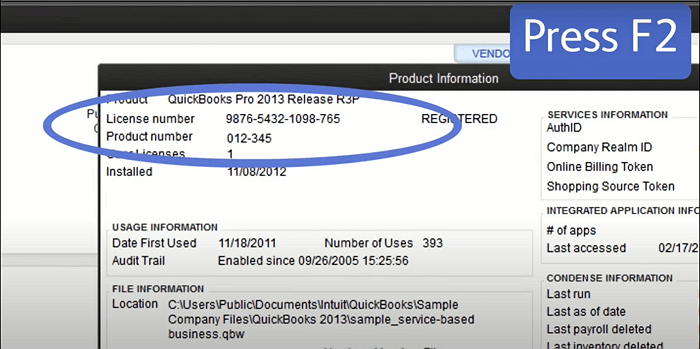
Hosting wasn’t an issue? Continue moving to the next method.
The .ND and .TLG are part of your QuickBooks company files. These are the configuration files that allow you to open the company file over the network or in a multi-user environment.
If these files are damaged, you will encounter different errors when opening the company file in QuickBooks. Renaming these files won’t let you lose the data. QuickBooks will automatically create these files once scanned through the QuickBooks Database Server Manager.
The QuickBooks Database Server Manager lets you host your company file on the network. Once you have renamed the .ND and TLG files, run QuickBooks Database Server Manager to scan the files.
Run QuickBooks Database Server Manager from the Tool Hub:
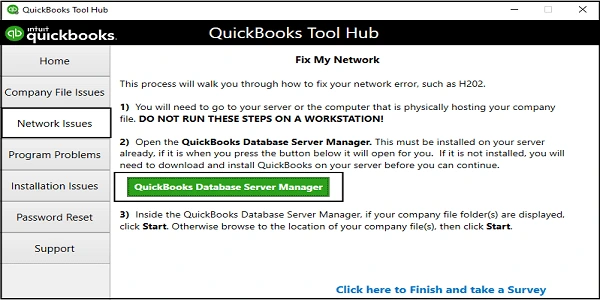
When you open a sample company file, you can test whether the problem is with QuickBooks or your company file. If you fail to open the sample file, it means the QB installation is damaged and needs to be repaired.
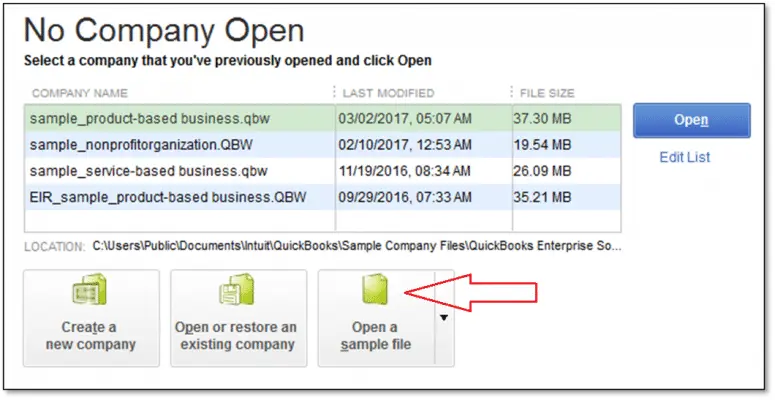
If the sample file gives you the same error message, repair your QuickBooks installation files.
Run QuickBooks Install Diagnostic Tool
If something went wrong during the QuickBooks install, it could cause problems when you try to use it. Run the QuickBooks Install Diagnostic Tool to fix common install issues.
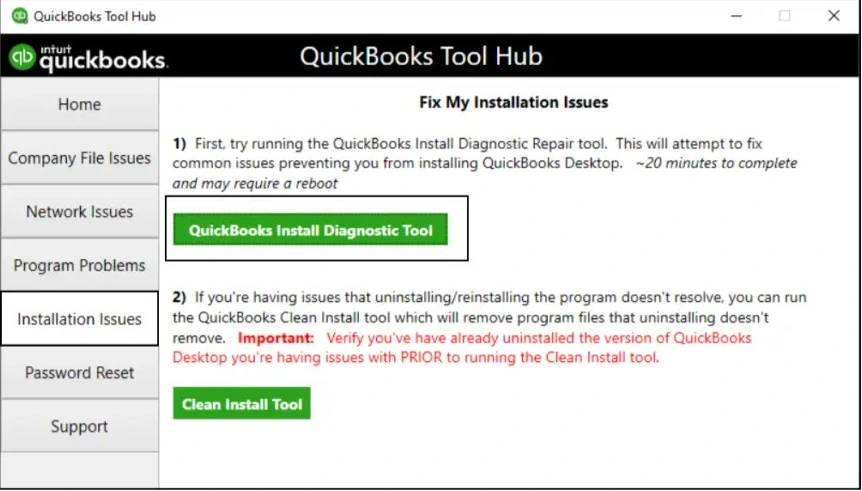
Still getting error code 6000 95? Perform the solution below.
Copying the company file to your desktop and opening it will test your company file for any problems with the location of the company file.
If the company file error 6000 95 persists, go to solution 7.
Multiple QuickBooks processes in the background or in Task Manager can cause conflicts with network settings and cause interference when opening a company file:
If you still encounter an error, proceed to Solution 6.
Follow the steps below to ensure you have sufficient permissions to open or share the company file:
| Important Notes: Review the full article before starting any steps.Verify that installation directories have proper permissions.For Microsoft Windows Home Edition, the security tab may not appear in normal mode. Restart in Safe Mode to proceed: – Restart the computer and press F8 until the Advanced Boot menu appears. – Select Safe Mode from the Advanced Boot menu and press Enter.The QBDataServiceUserXX varies by QuickBooks Desktop version. Example: QuickBooks Desktop 2019 uses QBDataServiceUser29; 2018 uses QBDataServiceUser28.Workstations with multi-user access enabled may accidentally switch to Alternate Hosting mode, which takes control of a company file and prevents other users from accessing it. |
Verify that permissions are set correctly
If the permissions are incorrect:
Change folder permissions
Do these to adjust the folder permissions:
Perform these steps for any folder. Remember that you may not have all the folders, as some are specific to certain versions of QuickBooks Desktop:
Note: If Everyone is not in the Group or User Name checkbox, click Add and type in Everyone, then click OK.
QuickBooks should have the right level of access that can help in avoiding future issues when working in the company file over the network.
Note: The steps below are only applicable for Windows 10.
If QuickBooks error code 6000 95 persists, perform Solution 9.
The Windows Firewall and antivirus software protect your computer from virus or malware attacks and control the ports for entering and exiting data that might damage your computer files or other Cybersecurity threats. If QuickBooks is considered a threat to your computer, it may block the software and all the processes, such as opening the company file. To resolve this, create a Windows Firewall port exception for QuickBooks files and folders, and then remove these files from the antivirus quarantine.
In conclusion, failure to open the company file can halt all the accounting and business processes, as you cannot access or modify any financial data. Following the above information can help you identify the root causes of QuickBooks error 6000 95 and perform the troubleshooting steps mentioned further.
We hope the error is resolved and you can run your business operations seamlessly. For further assistance, connecting to QuickBooks professionals is recommended. Dial TFN and talk to an expert now!
Why won’t my QuickBooks installation file open?
Your QuickBooks installation file may not be opening because of an incomplete installation, a damaged installation file, a corrupted QBWUSER.INI file, issues with your Windows operating system or permissions, or problems with your antivirus software.
How do I find my company file in QuickBooks?
To locate your company file in QuickBooks Desktop, click File > Open or Restore Company, then select Open a Company File to navigate to the file’s location. If the No Company Open dialogue box appears, select the Open or Restore an Existing Company button, choose Open a Company File, and then click Next to open the navigation window.
How do I fix the QuickBooks error 6000 95?
To fix QuickBooks error 6000 95, update QuickBooks Desktop, run the QuickBooks Tool Hub’s File Doctor, rename the company file to remove extra spaces, copy the company file to your Desktop, temporarily disable antivirus software, use a sample file to check for file damage, and update your Windows OS.
How do I fix QuickBooks already has a company file open?
To resolve the QuickBooks error that occurs when a company file is already open, try ending the QuickBooks processes via the Task Manager or restarting your computer. If that doesn’t work, you can try opening QuickBooks without a company file by holding the Ctrl key, then manually selecting your company file.
Can I delete a company file in QuickBooks?
Yes, you can delete a QuickBooks Desktop company file by locating it on your computer and deleting it from your hard drive, or you can “purge” a QuickBooks Online company file within its first 60 days by typing “yes” at a specific URL to erase all its data.

Lana Creston is an experienced technical and accounting writer with a total of 9 years of experience. She currently works on QuickBooks accounting and technical guides at QuickBookSupportNet. Lana has a passion for reading and writing about various technical topics, especially exploring new accounting methods and software, while continuously expanding her expertise in the ever-evolving field of finance and technology.

Quick, clear, and hassle-free QuickBooks assistance.
QuickBooks for Mac: Everything You Need to Know
Dec 12, 2025
Learn How to Create and File QuickBooks 1099 Forms
Dec 10, 2025
